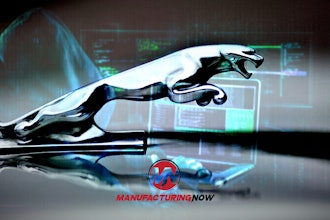
Today’s manufacturing organizations find themselves being pulled in opposite directions. On one side, modern technology, like AI, is opening up new ways to drive innovation and create a competitive advantage. On the other hand, the rapid implementation of new technology has created a complexity that’s adding technical debt and hindering operations on the manufacturing floor and beyond.
The generative AI boom over the past year is the perfect example of how new technology introduces new complexity. Investment in AI more than doubled from 2020 ($40.16 billion) to 2023 ($110.19 billion) — with significant growth expected to continue through 2025 ($158.41 billion). However, as our research shows, many organizations invest in new technology without a plan to bring it all together. They need a clear and complete view into their process and technology landscape and the ability to identify redundancies, spot bottlenecks and optimize operations. Bringing order to the complexity may seem daunting but it all comes down to how effectively you can unlock trapped data and connect systems to better govern, control, and achieve your SLA targets.
For example, let’s say a manufacturing company makes a significant investment to introduce new connected machinery on its factory floors. Sure, production workers can use that information to monitor output, but when it’s integrated into the context of digital business processes, you increase the value of that data tenfold. Purchasing teams can use it even further to monitor resource usage, and better forecast demand. Customer relationship teams can monitor delivery timelines, ensure proactive communication and satisfaction. Operations teams can monitor machine maintenance schedules, and more.
So how can all of this be operationalized? The key is to integrate technology investments, best practices and strategic initiatives into an accepted set of business processes and enterprise architecture. If you fail to bring everything together, you risk operational chaos that could disrupt your ability to deliver on promises, and that makes it extremely difficult to scale. It takes an evolved approach to process intelligence and portfolio management to turn this around.
The Consequences of Tech Sprawl
According to Software AG’s annual research, Reality Check 2024, the vast majority (86%) of manufacturing companies say their tech stack has expanded substantially in the last few years. Nearly three-quarters (70%) have accrued more technical debt in the last 12 months than in previous years, and almost half (42%) have invested heavily without a clear IT integration plan.
Additionally, an overwhelming 75% of manufacturing IT decision-makers acknowledge that the sheer size of their technology infrastructure makes it harder to be agile and productive. This tech sprawl has had far-reaching implications:
- Product Delays: Three out of four manufacturers admit to missing or experiencing severe delays in launching new products due to overly complex technology hampering their efforts. From equipment that breaks down to unnecessary processes, delays, and disruptions that can ripple across the business.
- Sustainability Setbacks: 76% of manufacturers cite technological complexity as the reason for missing or delaying the delivery of environmental, social, and governance (ESG) practices or targets. The data needed for these efforts often resides across multiple disconnected systems, and disclosure requirements change frequently, making it difficult for companies to keep up.
- Chaotic Tech Stacks: 74% of manufacturers feel their tech stacks have become more disorganized over the past 2-3 years, with 65% reporting an increase in disparate applications and systems despite digital transformation initiatives typically aiming to streamline these resources. Organizations of all sizes feel the impact of complicated workflows and mismanaged data, which can slow decision-making and lower productivity.
The Path Forward: Understanding and a Single Source of Truth
While the challenges are daunting, there is a path forward. The first step is understanding. Manufacturers must gain a comprehensive view of their entire architecture and processes, capturing insights and information from all corners. Connecting these disparate systems facilitates real-time data flow across the manufacturing ecosystem.
From consolidating production data and requirements to synchronizing supply chain operations with production schedules, a single source of truth enables evidence-based decision making. It also keeps you aligned to business objectives, with continuous visibility into outcomes and areas for improvement, so you know where you stand.
In today's rapidly evolving technology landscape, this sprawl cannot possibly be controlled and/or maintained by IT alone. The answer is to democratize process and architecture, using technology accelerators to lower the barrier to entry for business users to contribute to complex transformation initiatives on their own terms. This can include AI for just-in-time knowledge and instant insights, governance automation, to notify and involve stakeholders at the right time with the right message, and low/no code business rules engines – turning business blueprints into operational systems.
By implementing the right strategy, organizations can calm the chaos, establish efficient and well-governed processes, and focus on driving innovative business growth. This is the process intelligence lifecycle - turning data into value, providing transparency into the reality of operations, helping to identify and implement new ways of working, and continuously monitoring execution.
The manufacturing industry's digital transformation journey has reached a critical juncture. While technology promises unprecedented opportunities, the paradoxical complexity that comes with it threatens to derail progress. By embracing a holistic approach that emphasizes understanding through greater visibility and a single source of truth, manufacturers can navigate the complexity and unlock the true potential of their digital initiatives.























